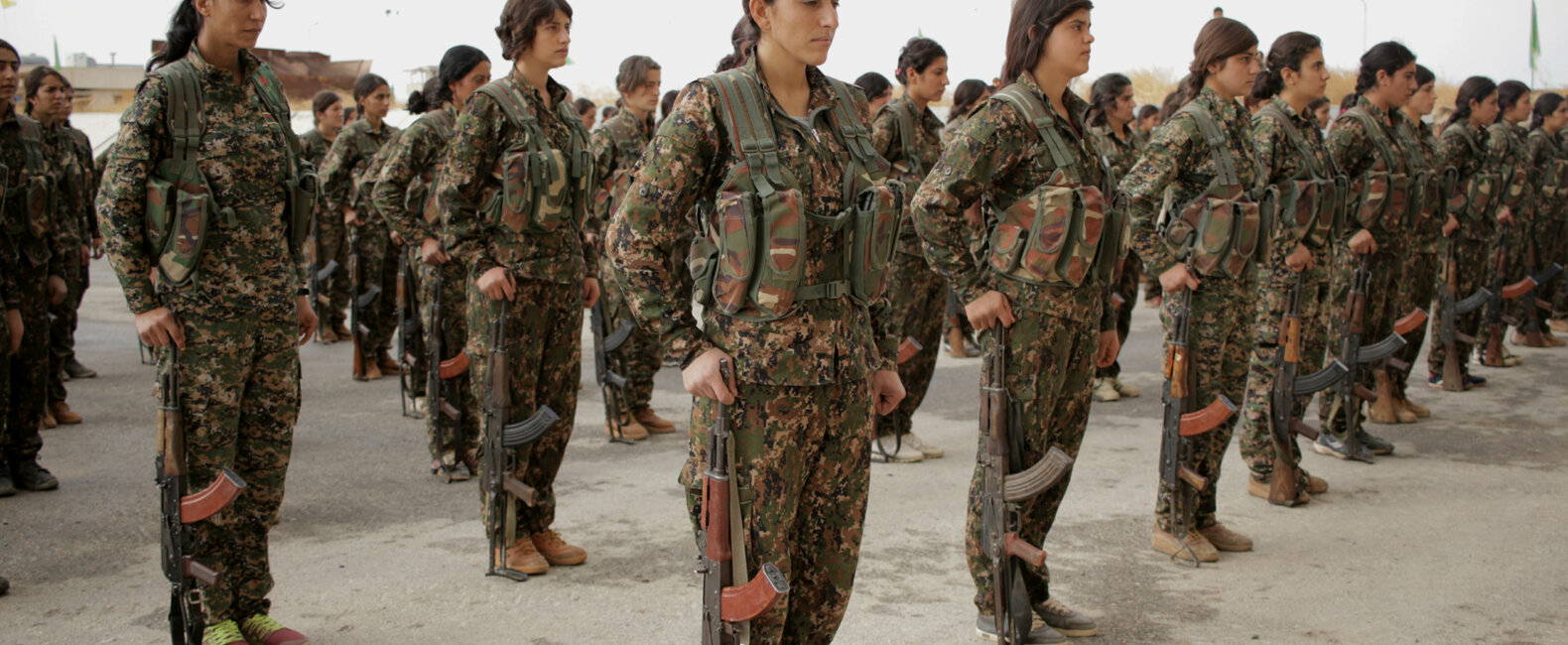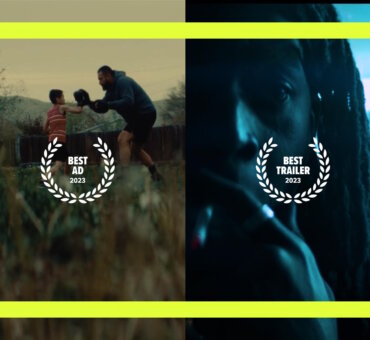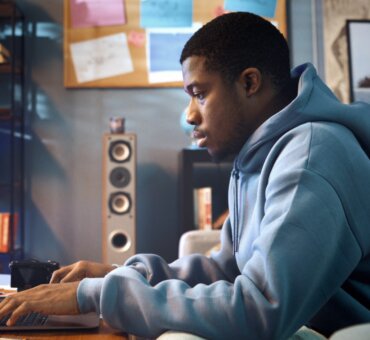Here’s a good rule of thumb: If you want your film to be more interesting, up the stakes. Case in point, RYOT Films’ new short documentary, Fear Us Women. It’s a story about the Yekîneyên Parastina Gel (YPG) women’s militia, which has been fighting ISIS on the front lines in Syria, told through the eyes of Hannah Bohman, a volunteer soldier from Canada. The stakes in this raw, beautiful documentary are, as you’d expect, life and death. They’re the kind of stakes its creator, David Darg, has become familiar with. Even comfortablewith.
His previous project, Body Team 12 — an Academy Award–nominated, Emmy Award–winning short documentary — followed a team of Liberian body extractors working during the 2016 Ebola crisis. Before that, he spent over a decade telling stories in some of the most war-torn, crisis-ravaged places in the world. In other words: David is something of an expert when it comes to high stakes. And he’s an undeniable talent when it comes to finding hopeful stories in the midst of hopeless circumstances.
“You know, when I’m in these conflict zones, or these places that have been hit by natural disasters, I often see the worst of humanity,” he told us recently. “But I also see the best.”
Watch the trailer below and read our conversation with director/editor David Darg about his recent film, Fear Us Women.
For Fear Us Women, did you know the story you want to tell ahead of time, or did you find it in the edit?
My editing process basically consists of me just wanting to get it over with as soon as possible. [laughs] I’m really impatient and I hate computers. But yes, I definitely have the story in my head long before I get to the edit desk.
For Fear Us Women, I had to pore over all the footage that Hannah [Bohman] had taken of herself, and find which sections were the most poignant and which would help bridge certain gaps in the footage we’d captured. That was one of the reasons we chose Hannah as the main character. Not only was her story fascinating because she was a foreign volunteer, but she’d also been documenting herself with this small camera. She had footage from the front lines. What she’d made was essentially a video diary, where she was looking into the lens and talking about what she was experiencing as it was happening. Those moments are some of the best in the film.
From an editor’s perspective — and from a storytelling perspective in general — it’s a total winner to have content like that. Because the story we wanted to tell was very specific to these women, and to Hannah in particular. We didn’t want the film to get too technical in terms of who was fighting whom. The conflict was — and is — complicated. What we were making was almost an educational piece about these women that said, “Hey, there are 10,000 women in this region fighting these battles on an almost daily basis.” So my editing process required a lot of weeding out of anything that might distract from that story or from these great characters.
What makes for an interesting documentary character?
The characters I look for normally tend to be doing something you could classify as ridiculously brave. I’m looking for people who are on the front lines of history. My last film, Body Team 12, was about a woman who was collecting dead bodies off the streets of Liberia during the Ebola crisis. I want to see someone test the limits of the human spirit. The women in Fear Us Women have literally fought off ISIS in these regions. And yet so little has been told about them! For me, I’m always looking for characters and stories that can encapsulate a moment in history, as a form of preservation. In the future, people can look back and better understand what happened and where credit is due.
How do you find stories like that?
It’s primarily because I do humanitarian work. I’ve been doing disaster relief and crisis response all over the world for the last fifteen years. That’s the primary reason I’m going into these places, not to make films necessarily. I’d say every year there’s some major disaster I’m involved in. And when I’m in those situations, I’m always keeping my eyes open for the type of character we talked about in the last question. For me, finding these stories and characters is a natural progression from just being in these places at those particular times, during those particular moments.
Is that how you found the story for Fear Us Women?
Yep, exactly. In 2014, I’d ended up in the Middle East working on the refugee crisis. I started doing a lot of research on the conflict, which is how I learned that there was this army of women fighting ISIS in Syria. It was such a profound and compelling story. I wanted to dig deeper and understand who these women were, why they were doing it, how they were doing it. That’s how I learned that it wasn’t just Syrian women doing the fighting. There were foreign volunteers. I felt like this story would best be told through one of their eyes because they would have an outside perspective on it, and also because we could do it in English. Over the course of the next couple years, I began looking for who that main character might be.
How did you find Hannah?
I’d reached out to a few women as potential main characters. One of them was a Danish woman with this very compelling story. She was fighting ISIS on the front lines, and then, when she got back to Denmark, she was arrested under terror laws. It was so ironic. I’d actually started shooting with her. But because of the nature of what she was going through, it turned out to be really tough to complete her story.
So then I found Hannah. She’d kind of made herself a microphone for the cause. Out of all the Western volunteers, she’s the best known. You see it in the film. She was making headlines like, “Former model goes to fight ISIS.” She got put in the spotlight, which made her very thoughtful and careful about how she wanted herself and the YPG represented. She’s obviously very passionate about the cause and what they’re fighting for and who she’s fighting with. So in order to gain her trust, I spent a lot of time with Hannah so she’d feel comfortable that I was going to tell the right story, not just the one about the model who went off to fight a war.
She doesn’t seem like your stereotypical model.
Hanna generally has a “no nonsense” personality, like many of the other fighters do. They’re very passionate about the cause and are relatively stern most of the time, but after spending time with them you see that they have this incredible connection through humor. I think humor is a survival tactic, in a way, in the midst of the unbelievable situation they’re steeped in. Hanna has a powerful personality, and being older than many of her comrades, she became a mother figure to them. Which just speaks volumes about who she is.
Because she’s a photographer, she was easy to work with on the film. She really appreciated the need to get the shot right.
Why was she driven to share her message?
Hanna quickly became a spokesperson for the YPJ. She realized that their fight wasn’t receiving enough attention in Western media, so she started to do interviews with major news outlets. She always saw the YPJ as a model for the much needed peace and progress in the Middle East. She just feels so passionately about promoting their cause that she was willing to die in the process.
Why are you drawn to such dangerous situations as a storyteller?
You know, when I’m in these conflict zones, or these places that have been hit by natural disasters, I often see the worst of humanity. But I also see the best. The opportunity to share those moments, those stories of inspiration within something horrible, that’s what I’m after as a filmmaker and a storyteller — that’s what keeps me going.






